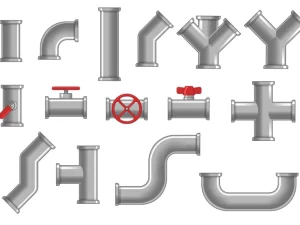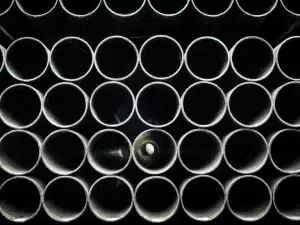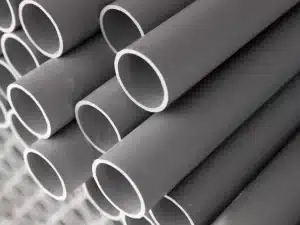Types of Blank Flanges Used in the Oil and Gas Industry
Even the most basic details need careful attention in the oil and gas industry to make sure that efficiency and safety are sustained. One of such components is a blank flange. Although it is often ignored, it serves an important function in pipeline activities.
Blank flanges are profoundly important during the segregation of piping systems and pressure tests. They also serve the function of blocking off pipe ends that are not in use. Apart from this, these flanges are used widely across operations, including upstream, midstream, and downstream. To ensure reliability and compliance, it is essential to partner with trusted blank flanges suppliers.
What Are Blank Flanges?
Blank flanges or blind flanges are solid disk-shaped objects used as plates to section off a pipe or a nozzle in a vessel. Unlike typical flanges, blank flanges lack the central opening, which makes them ideal for sealing the ends of pipelines and caps, or temporarily isolating other sections during maintenance. Blank flanges are very easy to remove or replace when needed, and they are bolted into place.
Importance of Blank Flanges in Oil and Gas Applications
Safety is critical in high-pressure regions like oilfields and refineries. Blank flanges act as an effective safety net against leaks and pressure build-up. They are essential during system testing, shutdowns, and isolation due to their strong construction.
Using the appropriate blank flange type guarantees a tight seal and optimal operational balance, thus averting dangerous leaks and system crashes. Consequently, getting flanges, oil, and gas from trusted specialists is vital for project completion.
Common Types of Blank Flanges
Different oil and gas operations call for different types of blank flanges. Each provides specific sealing features, limits, and correlations with pipe constituents. These are the most common ones used:
Raised Face (RF) Blank Flanges
Raised Face blank flanges are one of the most widely used types in the oil and gas industry. They’re characterized by a small, raised lip bordering the bore, allowing concentration of pressure during tightening of the flange. In addition, it promotes improved sealing in high-pressure situations.
RF flanges, commonly provided by blank flange suppliers, are best used with metal gaskets. Offshore rigs and processing plants are examples of pressurized areas that frequently rely on RF flanges.
Flat Face (FF) Blank Flanges
Unlike RF flanges, Flat Face blank flanges have a level protruding face. These are primarily applied on systems that are low-pressure or non-critical. Its design allows for complete ring gasket contact, mitigating the chance of non-uniform gasket deformation.
They are virtually never applied with anything other than cast iron piping systems, as traditional bolting is evenly distributed. Having access to specialized blank flanges suppliers makes certain that FF flanges serve the exact purposes set forth by oil and gas industry regulations.
Ring Type Joint (RTJ) Blank Flanges
RTJ blank flanges provide the best sealing performance in high-pressure and temperature environments. They include a metal ring that sits in a precisely cut groove for the flange face to form pressure-tight seals.
Oilfield operations are the most dominant use of RTJ flanges, as working towards other less demanding applications is a waste of high-performance sealing. RTJ flanges are normally made of stainless steel or other alloys. Aligning with trusted flanges, oil, and gas distributors guarantees serviceability and safety.
Custom Machined Blank Flanges
Some projects do not suit standard specifications. Custom-machined blank flanges solve a particular system requirement. These are custom-made to particular tolerances, pressure ratings, or materials for a project.
The blank flanges suppliers of custom manufacturing put importance on international quality standards and modifications that sustain special coating details. Blank flanges can have custom coatings, special dimensions, and bolt patterns to suit precise engineering drawings.
Materials Used in Manufacturing Blank Flanges
The performance of a blank flange is directly related to the raw material selected. A few of the common ones include:
- Carbon Steel: Low cost with high strength. Carbon steel is the most common alternative in oil and gas applications.
- Stainless Steel: Offshore and acidic environments use stainless steel due to its anti-corrosive and heat-resistant properties.
- Alloy Steel: Made for very high pressures and temperature ranges.
- Duplex and Super Duplex: These materials are suitable for subsea pipelines due to their higher resistance to corrosion and strength.
If the ready stock is vast, the flanges’ suppliers are willing to help provide the best materials for particular conditions.
Selecting the Right Blank Flange for Oil and Gas Operations
Consider the following when choosing a blank flange:
- Pipe’s pressure rating according to ANSI, API, or DIN standards
- Compatibility with pipe material
- Temperature and pressure of the operating conditions
- Bolting and gasket needs
- Consider the environmental exposure, such as offshore conditions
Working with experienced flanges, oil, and gas specialists helps ensure that all requirements are fulfilled, reducing downtime and risk.
Industry Standards and Certifications
Blank flanges should be certified and compliant with the regulations of standards-setting organizations, such as:
- ANSI / ASME B16.5
- API 6A
- ISO 9001: 2015
- DIN Standards
Reliable suppliers of blank flanges offer these certifications, which guarantee compliance, safety, operational longevity, and international standards for oil and gas projects.
Where to Source Reliable Blank Flanges?
Generic flanges can be sourced from many suppliers; however, trusted suppliers increase efficiency for pipeline projects by providing custom designs, engineering guidance, and timely deliveries.
Look for vendors that focus on oil and gas flanges, possess a strong reputation, and provide them with independent inspection certificates.
Conclusion
Despite appearing to be simple components of a bigger system, blank flanges play an exceptional role in safety. Maintaining and testing them is a big task involving utmost precision. Selecting the right flange from Raised Face to RTJ types requires reliance on expert blank flange manufacturers and understanding the particulars of the project.
Investing in high-grade materials offered by reliable blank flanges suppliers makes all the difference in facilitating safe, efficient, and leak-free systems for oil and gas operations.
FAQs
What is the use of a blank flange?
A blank flange permits the suspension of a vessel or pipeline nozzle so the entire piping system is not affected during maintenance or pressure testing and permits future expansion.
How do I choose between RTJ, FF, and RF flanges?
For high-temperature, high-pressure conditions, RTJ flanges are suitable whereas RF flanges are best for moderate pressure. FF is good for low-pressure and non-critical systems. Consider system specifications such as compatibility with gaskets and sealing strength depending on the type of flange being used.
Can blank flanges be reused in oil and gas systems?
Provided that the blank flanges have not sustained any damages from prior use, they can be reused. The oil and gas operations should be examined for wear, corrosion and warping before reinstalling to maintain the safety and sealing capabilities.
What materials are appropriate for high-pressure oilfield operations?
Oil and gas systems subjected to excessive pressure and severe temperatures are best off with duplex materials, stainless or alloy steel. These materials supply superior strength, resistance to severe temperatures, and protection against corrosion.
Can I get customized blank flanges for specific project requirements?
Indeed, there are blank flange suppliers who provide custom machining services. In the oil and gas industry, you can specify dimensions, materials, pressure ratings, and coatings to define specific pipeline configurations and specialized project requirements.







